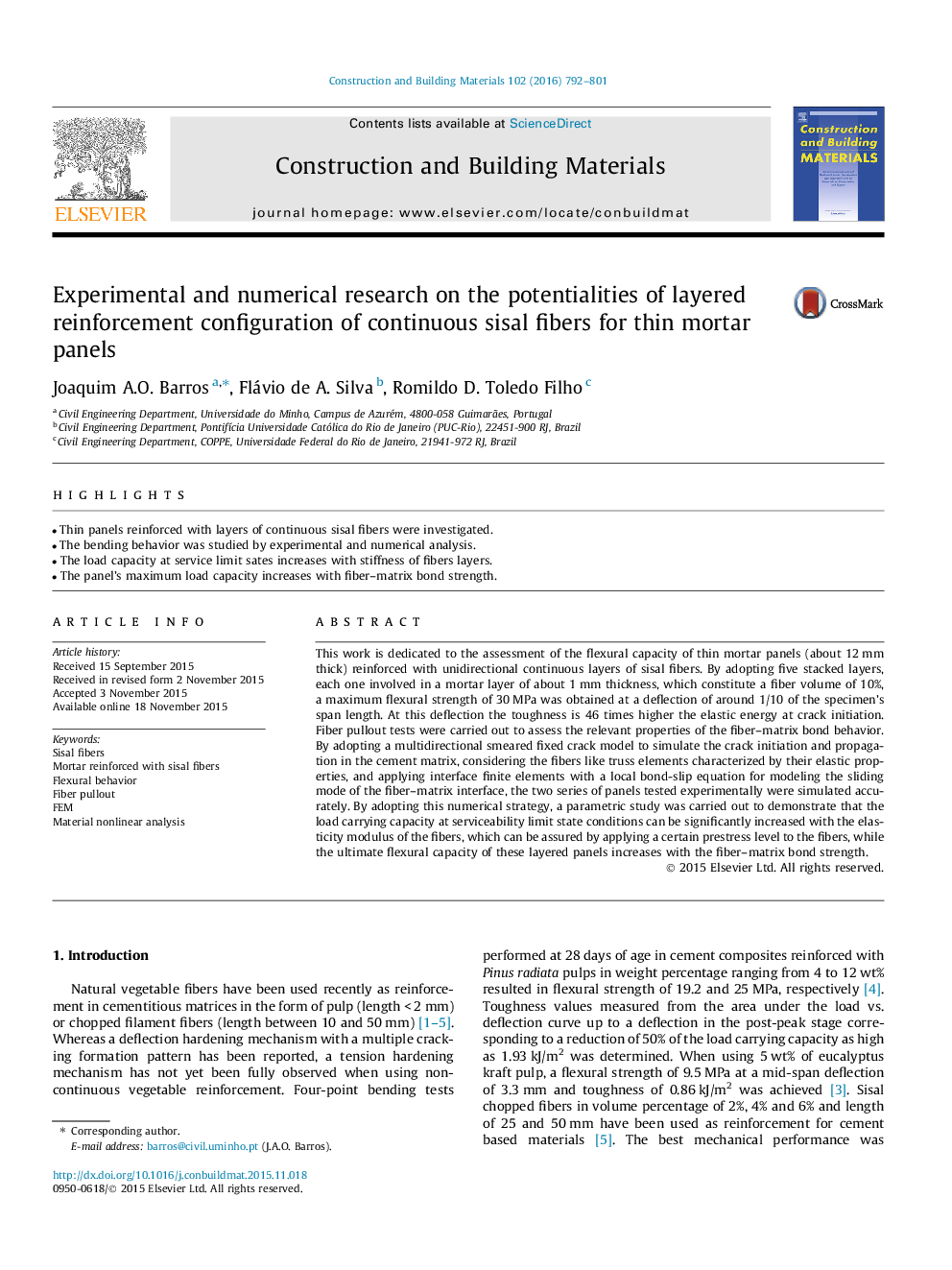| Article ID | Journal | Published Year | Pages | File Type |
|---|---|---|---|---|
| 10285105 | Construction and Building Materials | 2016 | 10 Pages |
Abstract
This work is dedicated to the assessment of the flexural capacity of thin mortar panels (about 12Â mm thick) reinforced with unidirectional continuous layers of sisal fibers. By adopting five stacked layers, each one involved in a mortar layer of about 1Â mm thickness, which constitute a fiber volume of 10%, a maximum flexural strength of 30Â MPa was obtained at a deflection of around 1/10 of the specimen's span length. At this deflection the toughness is 46 times higher the elastic energy at crack initiation. Fiber pullout tests were carried out to assess the relevant properties of the fiber-matrix bond behavior. By adopting a multidirectional smeared fixed crack model to simulate the crack initiation and propagation in the cement matrix, considering the fibers like truss elements characterized by their elastic properties, and applying interface finite elements with a local bond-slip equation for modeling the sliding mode of the fiber-matrix interface, the two series of panels tested experimentally were simulated accurately. By adopting this numerical strategy, a parametric study was carried out to demonstrate that the load carrying capacity at serviceability limit state conditions can be significantly increased with the elasticity modulus of the fibers, which can be assured by applying a certain prestress level to the fibers, while the ultimate flexural capacity of these layered panels increases with the fiber-matrix bond strength.
Related Topics
Physical Sciences and Engineering
Engineering
Civil and Structural Engineering
Authors
Joaquim A.O. Barros, Flávio de A. Silva, Romildo D. Toledo Filho,
